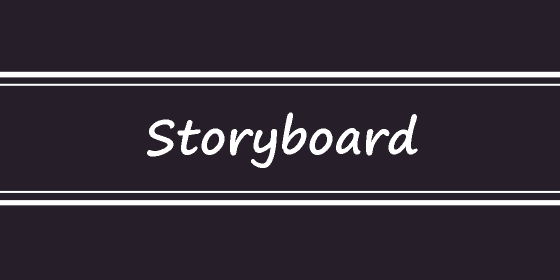Storyboard

A storyboard is a visual representation of a story or concept, presented in a sequence of illustrations or images, often accompanied by brief descriptions or notes. It is commonly used in various fields, including filmmaking, animation, advertising, and user experience (UX) design. Storyboards serve as a means to visualize and plan the narrative or flow of a project before it is fully developed or executed.
In the context of different domains, a storyboard can have specific purposes:
- Filmmaking and Animation: In film and animation, storyboards are used to plan the sequence of scenes, camera angles, and movements. They help filmmakers and animators pre-visualize how the story will unfold on screen, allowing them to make adjustments and refine the storytelling before production begins.
- Advertising and Marketing: Storyboards are utilized to illustrate advertising concepts or campaign ideas. They provide a visual guide for how the commercial or marketing materials will look and help stakeholders understand the creative direction.
- User Experience (UX) Design: In UX design, storyboards are used to depict the user journey and interactions with a product or service. They help designers and stakeholders visualize the user’s experience, identify pain points, and refine the user interface and user flow.
A typical storyboard consists of a series of rectangular panels, each representing a scene, action, or key moment in the story. These panels are arranged in chronological order, representing the sequence of events. Additional information, such as dialogue, camera angles, and notes, may be included to provide context and clarify the intended vision.
Storyboards are valuable tools because they allow creators and stakeholders to quickly grasp the overall structure and flow of a project. They facilitate communication and collaboration among team members, ensuring everyone is on the same page regarding the project’s direction. Storyboarding also provides a way to identify potential issues or gaps in the narrative early on, which can save time and resources during the later stages of production or development.